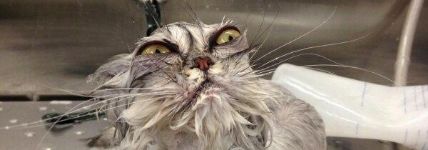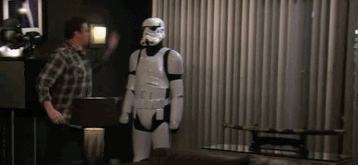USA Today wrote:Star Wars has always taken place a long time ago, in a galaxy far, far away. Now it will take place in another dimension: 3-D.
Lucasfilm has decided to reprocess the series into that format and release the films in theaters again, starting in 2012 with the 1999 prequelThe Phantom Menace. It's only one-sixth of the news that Star Wars fans have been waiting to hear, but it's the first step toward converting the other prequels and original trilogy.
"The process is really extensive, and we want to make sure each of the films gets the attention it needs, so we're not ready to talk about the release patterns of the other films," says Lucasfilm spokeswoman Lynne Hale.
The highest-quality 3-D is achieved by shooting with cameras that capture two images simultaneously, just as two eyes would, which was the process used to film Avatar. But films that are not originally shot with 3-D cameras, such as the Star Wars series, can undergo a computerized refinishing that creates the illusion of depth.
It requires that each image in the film be scanned and slightly adjusted to create two images, as if viewed from two eyes. When those images are projected on a screen and viewed through polarized lenses, the brain perceives three dimensions.
But when the process is rushed, it can — in Star Wars terms — give people "a bad feeling about this."
Some recent 2-D films, such as the Clash of the Titans remake and The Last Airbender, were hastily converted shortly before their releases to claim the prestige (and higher ticket prices) of a 3-D experience, but audiences and critics balked at the low quality of the presentation. Even relentless 3-D prosthelytizer Jeffrey Katzenberg of DreamWorks Animation has scorned such quick changes as sloppy.
That's why Lucasfilm is being cautious and not locking itself into a strict timeline. Even the approximate season of release for The Phantom Menace in 2012 is being left open.
To oversee the conversion, the series is getting its own Jedi knight of digital imagery: John Knoll, visual effects supervisor for Industrial Light & Magic (and coincidentally the co-creator, with his brother, of Adobe Photoshop).
He described the process of converting the films as a partnership between a human artist and the digital precision of a computer, intricately studying and adjusting every frame.
"You're generating a synthetic second eye," Knoll says. "You're finding out where the boundaries of objects are in the scene and what their distance is to the camera, and you're using that information to generate (3-D)."
Only so much of the work can be done automatically by computer, and even then it has to be studied closely by a human being. "If you see a round object, you're reconstructing what is behind it," Knoll says, since both "eyes" see a slightly different perspective than the 2-D image allowed.
Although the prequels were shot more recently than the original trilogy, converting them will be more complicated because there is more intricacy to the background effects. Knoll cites a chase scene through a galactic city's floating traffic in Attack of the Clones as a particular challenge. "There are thousands and thousands of flying images," he says. "But the nice thing about stereo (visuals) is you get this wonderful immersive effect if it's done right."
[color="Red"][font="Book Antiqua"]Col. Roy Mustang[/font][/color]




 " I am shocked truly shocked about this.":o:grin:
" I am shocked truly shocked about this.":o:grin:







